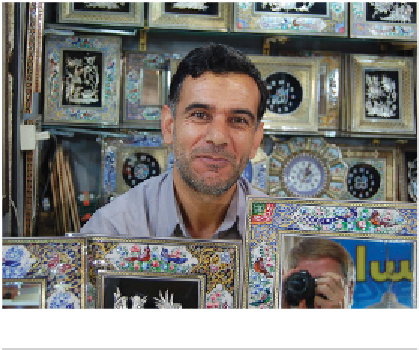Travel Reference
In-Depth Information
marketing products to
consume, billboards sell
an ideology. Some are
uplifting (Shia scrip-
ture reminding people
there is wisdom in com-
passion). Many others
glorify heroes who died
as martyrs, taunt the
US, cheer for Hezbol-
lah, trumpet “Death to
America” and “Death
to Israel,” and so on.
h ese murals mix fear, religion, patriotism, and a heritage of dealing with
foreign intervention.
Many things I experienced in Iran i t the negative image that I'd seen back
home. But the more I traveled there, the more apparent it became that the
standard, media-created image of Iran in the USA was not the whole story.
I simply couldn't reconcile the fear-mongering and hate-i lled billboards with
the huge smiles and genuine hospitality we received on the ground.
Ask anyone who has lived in a country where they disagree with the
leaders: Attention-grabbing bombast does not necessarily rel ect the feelings
of the man or woman on the street. h
Most Iranians genuinely like Americans.
roughout my visit, I kept thinking:
Politicians come and go. h
e people are here to stay.
Death to…Whatever!
Trai c is notorious in Tehran. Drivers may seem crazy, but I was impressed
by their expertise at keeping things moving. At some major intersections,
there were no lights—eight lanes would come together at right angles, and
everyone just shul ed through. People are great drivers, and, somehow, it
works. (It inspired me to drive more aggressively when I got home.)
While the trai c is hair-raising, it's not noisy. Because of a history of
motorcycle bandits and assassinations, only smaller, less powerful (and
therefore quieter) motorcycles are allowed. To get somewhere in a hurry,
motorcycle taxis are a blessing. While most Iranians ignore helmet laws, I
was more cautious. I was warned, “It's better to leave a little paint on passing
buses than a piece of scalp.”















































































